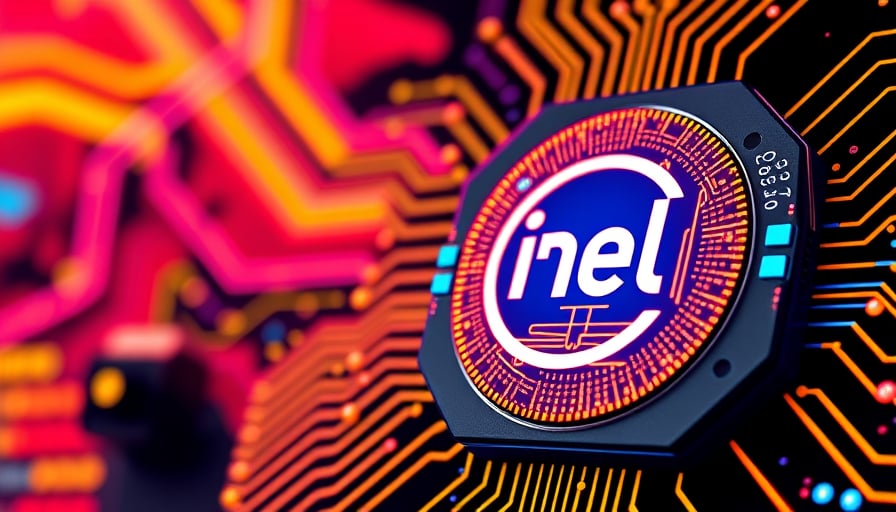Corporate News Analysis: Intel’s Strategic Pivot in Artificial‑Intelligence Hardware
Executive Summary
Intel Corporation, a dominant player in the U.S. semiconductor industry, is poised to announce significant changes to its artificial‑intelligence (AI) strategy during a series of investor conferences scheduled for later this month. The company’s leadership has announced that the chief executive officer (CEO) will personally oversee the AI division following the departure of the former technology head. Simultaneously, Intel is forging new partnerships aimed at bolstering its competitive stance in the AI hardware market, a response to recent intelligence indicating that a leading AI firm has decided to discontinue the procurement of Intel chips. These events coincide with a period of modest volatility in Intel’s Nasdaq-listed shares, reflecting the market’s cautious assessment of the company’s strategic direction and the broader dynamics of the semiconductor sector.
1. Contextualizing Intel’s Move Within the Semiconductor Landscape
The semiconductor industry is characterized by rapid technological turnover, high capital intensity, and a concentration of a few key players. In recent years, the AI sub‑segment has accelerated from a niche to a mainstream driver of demand for high‑performance computing. Major competitors such as NVIDIA, AMD, and Google (via its Tensor Processing Units) have intensified their focus on AI‑optimized architectures, creating a pressure environment where incumbents must innovate or cede market share.
Intel’s decision to place the CEO directly in charge of the AI division underscores the strategic importance of this segment. Historically, Intel’s AI initiatives have been fragmented across research, product development, and sales units. By centralizing leadership, the company signals a unified direction, potentially streamlining decision‑making and resource allocation.
2. Impact of the AI Firm’s Procurement Decision
A prominent AI organization has reportedly ceased purchasing Intel chips, a development that likely reflects concerns about performance, power efficiency, or supply chain reliability compared to rivals. While the specific firm’s identity has not been disclosed publicly, the broader implication is a measurable erosion of Intel’s revenue pipeline in high‑margin AI workloads.
This loss forces Intel to reassess its product roadmap and partnership strategy. The company’s forthcoming alliances are therefore critical to mitigating the risk of further attrition in the AI hardware market. Potential partners may include chip designers specializing in domain‑specific architectures (e.g., Graphcore, Cerebras), system integrators, or cloud service providers looking to diversify their supply base.
3. Partnership Strategy and Competitive Positioning
Intel’s announced partnerships aim to address two core competitive levers:
- Technology Complementation – By collaborating with firms that excel in areas where Intel has lagged (e.g., energy‑efficient inference engines, neuromorphic computing), the company can accelerate time‑to‑market for AI‑centric products.
- Ecosystem Expansion – Partnering with cloud and AI service providers expands Intel’s reach into data‑center deployments, potentially recouping market share lost to competitors.
These alliances may also enable Intel to co‑develop standardized interfaces (e.g., PCIe, NVMe, or custom AI interconnects), fostering ecosystem lock‑in and lowering adoption barriers for customers.
4. Market Reaction and Stock Performance
Intel’s shares have displayed modest movement on the Nasdaq, indicating that investors are cautiously optimistic but also wary of execution risks. Key valuation metrics—such as price‑to‑earnings and earnings per share—remain under pressure due to the company’s historically high debt load and recent margin compression.
The stock’s limited volatility suggests that the market perceives Intel’s CEO‑led AI initiative and partnership strategy as a credible, albeit incremental, response to competitive challenges. However, the company will need to demonstrate tangible performance gains—through product launches, revenue growth, and cost efficiencies—to secure a more robust investor confidence.
5. Broader Economic and Industry Implications
Intel’s strategic pivot is emblematic of a sector-wide shift where traditional integrated device manufacturers must either evolve into technology enablers or risk obsolescence. The emphasis on AI hardware reflects macro‑level trends:
- Digital Transformation – Global enterprises are investing in AI to unlock efficiencies, necessitating a robust supply of specialized processors.
- Supply Chain Resilience – Recent geopolitical tensions have highlighted the need for diversified manufacturing footprints and supply sources.
- Sustainability Pressures – Energy‑efficient chips are becoming a differentiator, aligning with corporate ESG commitments.
Intel’s success—or failure—in this domain will reverberate across the semiconductor ecosystem, influencing competitive dynamics, pricing strategies, and the direction of subsequent R&D investment.
6. Conclusion
Intel’s forthcoming announcements at investor conferences signal a decisive, if cautious, attempt to recalibrate its AI hardware strategy. By entrusting the CEO with direct oversight and engaging in new partnerships, the company is attempting to bridge gaps in technology, market reach, and ecosystem integration. The modest Nasdaq movement underscores investor ambivalence; the ultimate test will be whether these initiatives translate into measurable market gains and restored shareholder confidence amid an intensely competitive AI hardware landscape.




